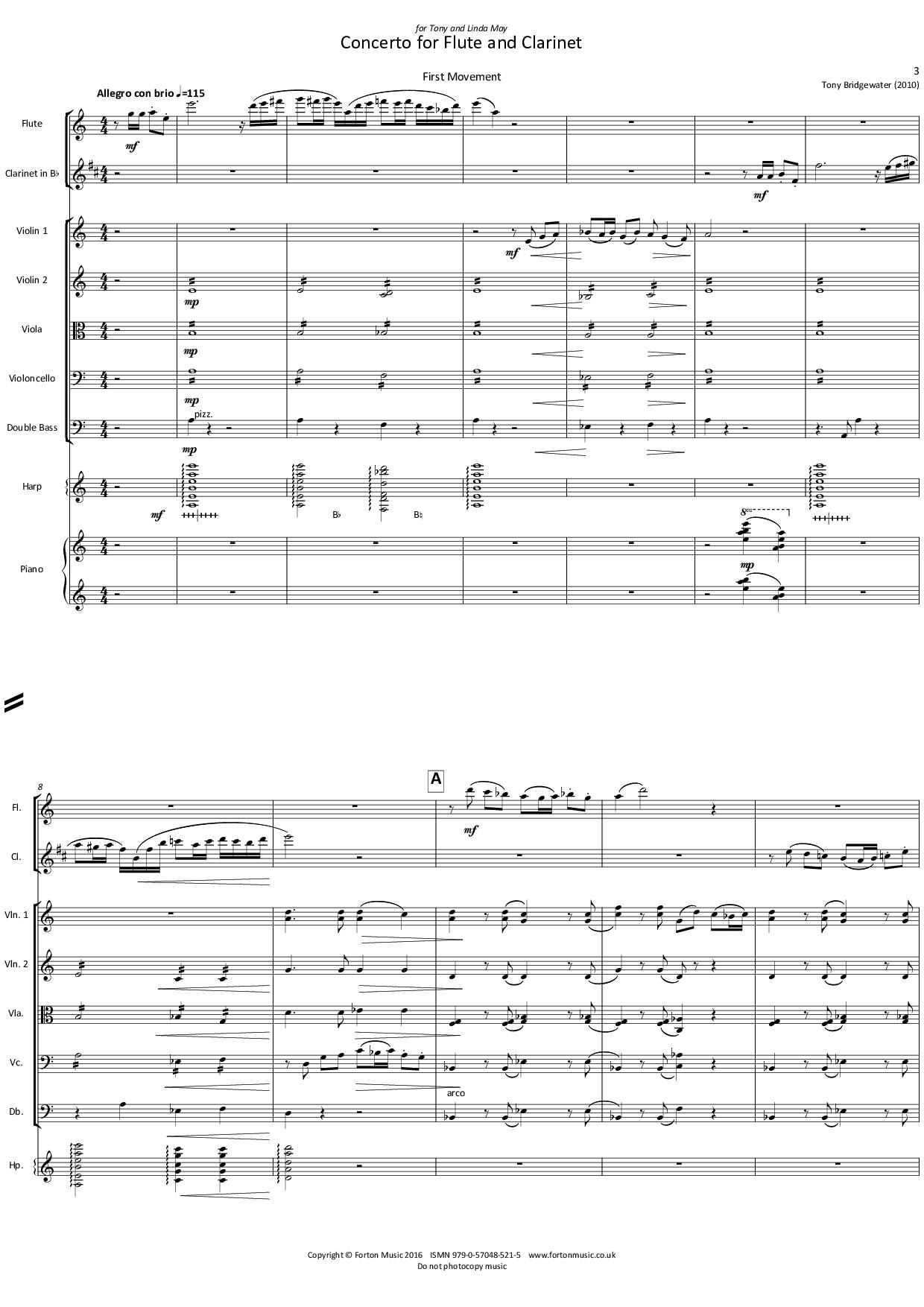Click the links below to hear the movements.
Double Concerto
Price range: £37.50 through £50.00
Description
I wrote my Double Concerto for Flute and Clarinet during the summer of 2010. It was composed for Tony May (clarinet) and his wife Linda (flute) at the invitation of the Central England Ensemble. I conducted the first performance in Birmingham on 17th February 2013, and it was repeated with the same orchestra and soloists as part of the Local and Live concert series in March 2015. The original score uses orchestral strings, with additional parts for harp and piano which give a wider range of string colours and add a sharper edge to the sound in places. The lively first movement is based on two ideas in a traditional sonata form: the opening rhythmic motif, played first by the flute and then echoed by the clarinet, and a contrasting lyrical melody, also introduced by each soloist in turn. The development section freely explores both ideas and builds to a slightly threatening climax, with dissonant repeated chords in the strings. The recapitulation suddenly lightens the mood with a return to the opening flute motif above pizzicato cellos, and both ideas are reprised before a short coda which finishes with a bright flourish. The slow movement was inspired by the beautiful mountain scenery of Austria, which I visited on a concert tour with my school Concert Band and Choir. It is a series of variations based on a 10 bar chord pattern, first stated by the strings and harp. The variations become more serious and complex, including one almost like a cadenza for the unaccompanied soloists, but eventually the music returns to the tranquillity of the opening, and fades away into the distance. The final movement is a lively, dance-like rondo, based on an irregular 3 3 2 grouping of quavers. There are two contrasting episodes, one sharp and staccato, the other more lyrical and song-like. The concluding coda includes brief references to the chord pattern of the second movement and the rhythmic idea from the first, before a final reprise of the rondo theme brings the piece to an exuberant conclusion.
Additional information
| composer | |
|---|---|
| instrumentation | |
| skill-level | |
| Select an Option |








